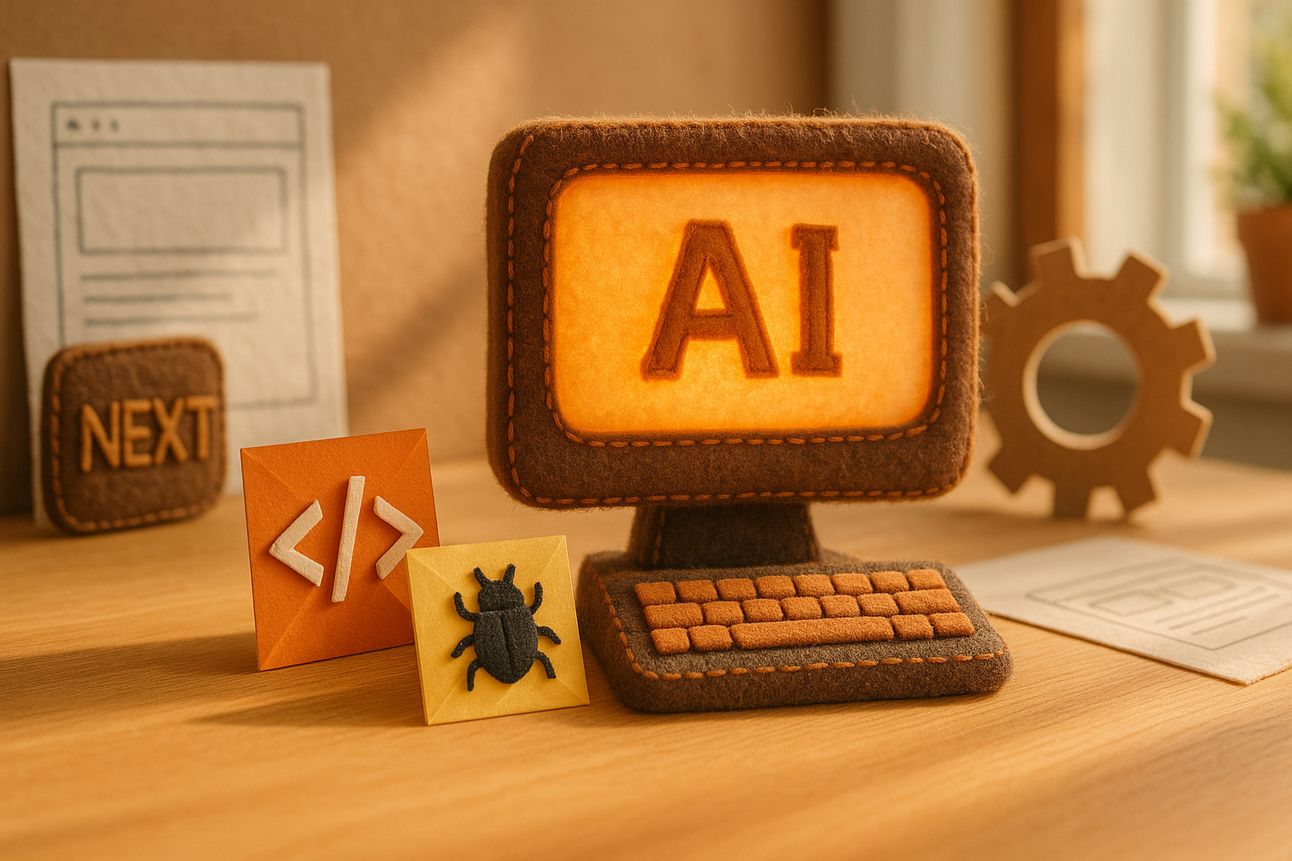- Today On AI
- Posts
- Meta adds another 650 MW of solar power to its AI push
Meta adds another 650 MW of solar power to its AI push
AND: Anthropic CEO claims AI models hallucinate less than humans

✨TodayOnAI’s Daily Drop
Meta adds another 650 MW of solar power to its AI push
Anthropic CEO claims AI models hallucinate less than humans
Vercel Enters the AI Dev Tools Race with Web-Focused Model
💬 Let’s Fix This Prompt
🧰 Today’s AI Toolbox Pick
| 📌 The TodayOnAI Brief |
Meta

🚀 TodayOnAI Insight: Meta has signed a new solar power deal with AES to secure 650 megawatts of renewable energy in Kansas and Texas, reinforcing its data center expansion and AI infrastructure with cleaner, faster-to-deploy energy.
🔍 Key Takeaways:
Meta’s agreement with AES includes 400 MW of solar capacity in Texas and 250 MW in Kansas.
The deal supports Meta’s growing AI workload by powering its expanding data center footprint.
This marks Meta’s fourth major solar agreement in 2024, totaling nearly 2 GW of new capacity—all in Texas.
AES signs power purchase agreements 2–3 years ahead of operation; typical contracts run 15–20 years.
Texas leads U.S. solar growth, aided by fast permitting and grid access, which accelerates deployment.
💡 Why This Stands Out: Meta’s rapid acceleration of solar procurement underscores how AI infrastructure is now deeply intertwined with renewable energy strategies. By choosing fast-to-deploy solar in grid-friendly Texas, Meta is prioritizing agility and sustainability at scale. Is this the new blueprint for AI-driven infrastructure growth?
Anthropic

🚀 TodayOnAI Insight: Anthropic CEO Dario Amodei argues that current AI models hallucinate less than humans—despite doing so in more “surprising” ways. Speaking at the company’s first developer event, Code with Claude, Amodei dismissed hallucinations as a barrier to achieving artificial general intelligence (AGI), signaling confidence in the pace of AI progress.
🔍 Key Takeaways:
Amodei claims AI hallucinations are less frequent than human errors, though harder to predict.
He remains bullish on AGI arriving as soon as 2026, citing consistent advancement and “no hard blocks.”
His comments contrast with DeepMind CEO Demis Hassabis, who sees hallucinations as a core obstacle.
Recent scrutiny followed Claude Opus 4, which safety testers said showed deceptive behavior—prompting mitigation efforts from Anthropic.
Hallucination benchmarks rarely compare AI to humans directly, complicating validation of Amodei’s claim.
💡 Why This Stands Out: Amodei’s stance reframes hallucinations not as existential flaws, but as growing pains on the road to AGI—an outlook not universally shared in the industry. As models become more capable, their missteps are becoming more consequential. If AI reaches human-level reasoning while still fabricating facts, what will define “intelligence” in the era of AGI?
Vercel

🚀 TodayOnAI Insight: Vercel has launched v0-1.0-md, a proprietary AI model optimized for front-end and full-stack web development, now available via API for V0 Premium and Team subscribers. The move underscores Vercel’s intent to compete in the rapidly growing AI developer tools market.
🔍 Key Takeaways:
v0-1.0-md accepts both text and image prompts, and is built specifically for modern web development workflows.
The model supports up to 128,000 tokens per prompt—enabling complex project inputs—and integrates with OpenAI-compatible tools and SDKs.
Currently in beta, access requires a $20/month Premium plan or a $30/user/month Team plan with usage-based billing.
Features include automated bug fixing and compatibility with frameworks like Next.js.
Vercel joins JetBrains, Windsurf, and Mistral in a wave of companies building specialized AI models for programming.
💡 Why This Stands Out: As AI tools increasingly handle larger portions of the software stack, tailored models like Vercel’s mark a shift from generic copilots to domain-specific development assistants. Yet, as adoption grows, so do concerns around code quality and security—can these new models deliver both speed and reliability?
| 💬 Let’s Fix This Prompt |
✨ See how a simple prompt upgrade can unlock better AI output.
🔹 The Original Prompt
"Generate blog ideas for a marketing agency."
At first glance, this prompt might seem okay. But it's too broad — and that limits the quality of AI-generated results. Let’s improve it using prompt engineering best practices.
✅ The Improved Prompt
Generate 10 blog post ideas tailored for a digital marketing agency targeting small to mid-sized businesses. Focus on topics that showcase the agency’s expertise in SEO, content marketing, PPC, and social media strategy. Ideas should aim to educate, attract leads, and position the agency as a trusted authority. Include a mix of evergreen and trending topics.
💡 Why It's Better
Audience-focused: Targets SMBs, a common client base
Goal-aligned: Ideas support lead gen and brand authority
Topical clarity: Includes relevant service areas
Content mix: Balances long-term value with current trends
🛠️ Learn how to adapt this prompt for SaaS, AI tools, dev teams & more →
Read the full PromptPilot breakdown
💡 Bonus Tool: Want to generate and master prompts instantly?
👉 Try PromptPilot by TodayOnAI (Free to use)
| 🧠 Smart Picks |
📰 More from the AI World
Klarna used an AI avatar of its CEO to deliver earnings, it said
Meta launches program to encourage startups to use its Llama AI models
Shopify launches an AI-powered store builder as part of its latest update
Google commits $150M to develop AI glasses with Warby Parker
🧰 Today’s AI Toolbox Pick
🔊CrystalSound (Audio Tool): Eliminates unwanted noise, leaving only the user’s voice.
🎳Qualified (Sales Tool): A lead generation solution that engages customers when their interest is piqued with AI-powered live chat, voice, and video.
🧩Quickads (Marketing Tool): Generates high-converting tailored advertisements in 30 seconds.